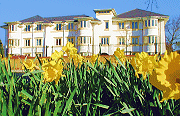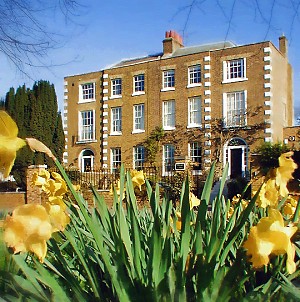|
|
 |
|
Ealing
|
 |
|
The ‘nice’ part of Southall, according
to some, situated to the north-west of Osterley Park. Originally just called Norwood, it was first mentioned in a will of
832, which bequeathed the manor to the Archbishop of Canterbury. St Mary’s church is of Norman origin and was rebuilt
in the mid-fourteenth century, when the Plough Inn was established to serve labourers working on the project. Several handsome
villas were built here in the late eighteenth and early nineteenth centuries, most of which have since been lost to suburban
development. The finest survivor is Sir John Soane’s Norwood Hall, which he designed for a friend in 1803, in a similar
style to his own Pitshanger Manor. The house, which has original Soane drawings and a large walled garden, was modified and
extended by the Unwin family in the late nineteenth century. Early in the 1920s the Unwins sold off much of Norwood Hall’s
land to the builders Warren and Wood. Their estate’s streets are named after places in Dorset, Warren’s home county.
Norwood Hall itself and its remaining nineteen acres of gardens were acquired by Middlesex county council and converted to
a horticultural college. The hall is presently undergoing conversion to a Sikh faith school.
The formation of the borough of Southall-Norwood in 1935 echoed the physical convergence of the two settlements on the former
brickfields between the railway line and the Grand Union Canal. A large part of Norwood Green was made a conservation area
in 1969.
 |
 |
|
|
|
 |

|
| Friars Lawn and the Grange are a pair of two late-eighteenth century houses facing the green |
Tim Lott, in his poignant autobiography The Scent of Dried Roses, depicts the suburban aura of Norwood Green in the 1960s. “The neat houses are decked out with
a jumble of modest details of dreamed life – a caravan or boat in the front yard, a cartwheel on the wall, carriage
lamps at the entrances.”
|
 |
|
|
|
|
|
Postcode area: Southall, UB2
Population: 12,647
Further reading: Alan D Sabey (editor), Norwood Green in the Year 2000, Norwood Green Residents’ Association, 2000

Text and selected images are reproduced with the permission
of Chambers but may differ from the published versions
All content © 2005–2010
|
|
|
 |

